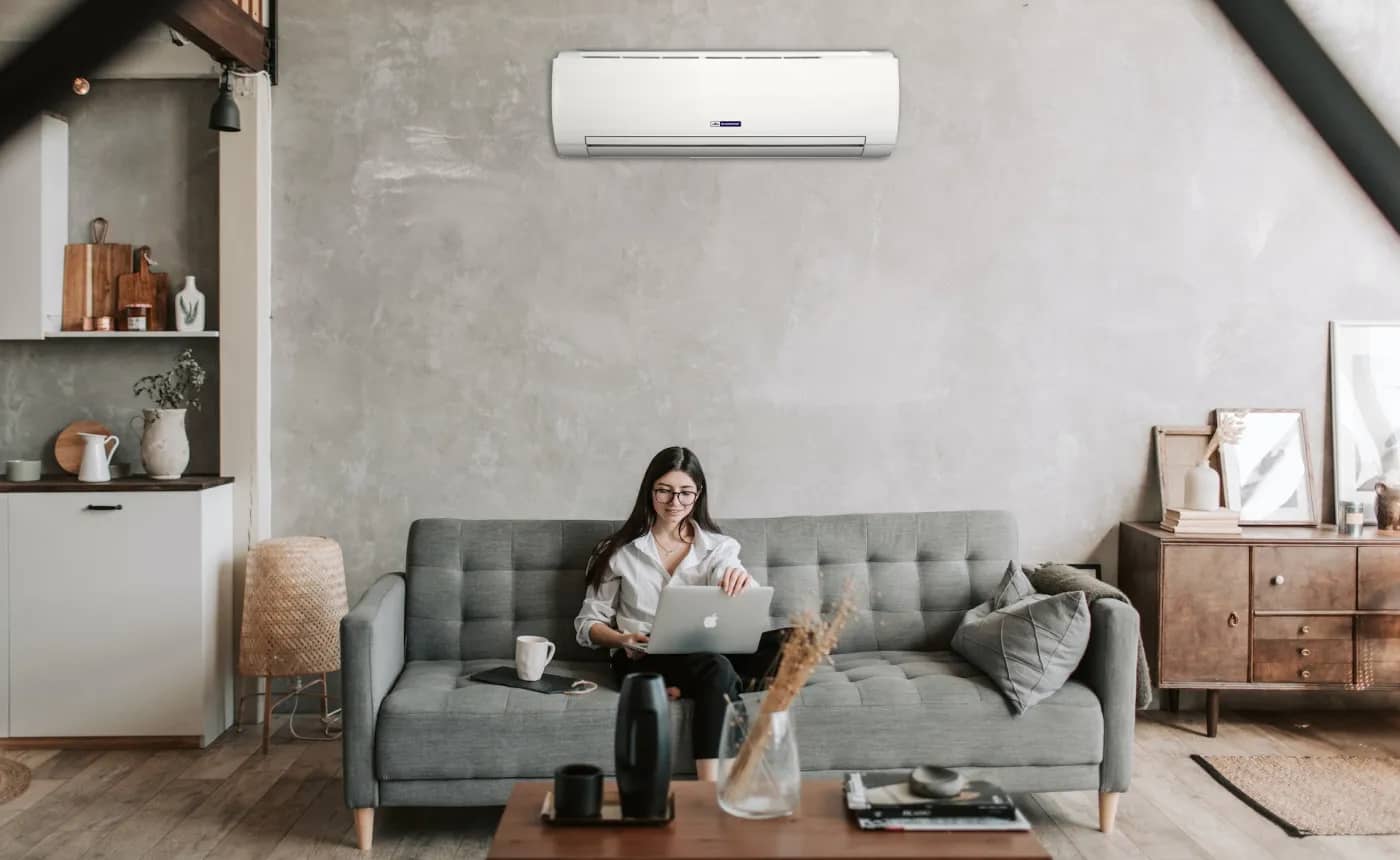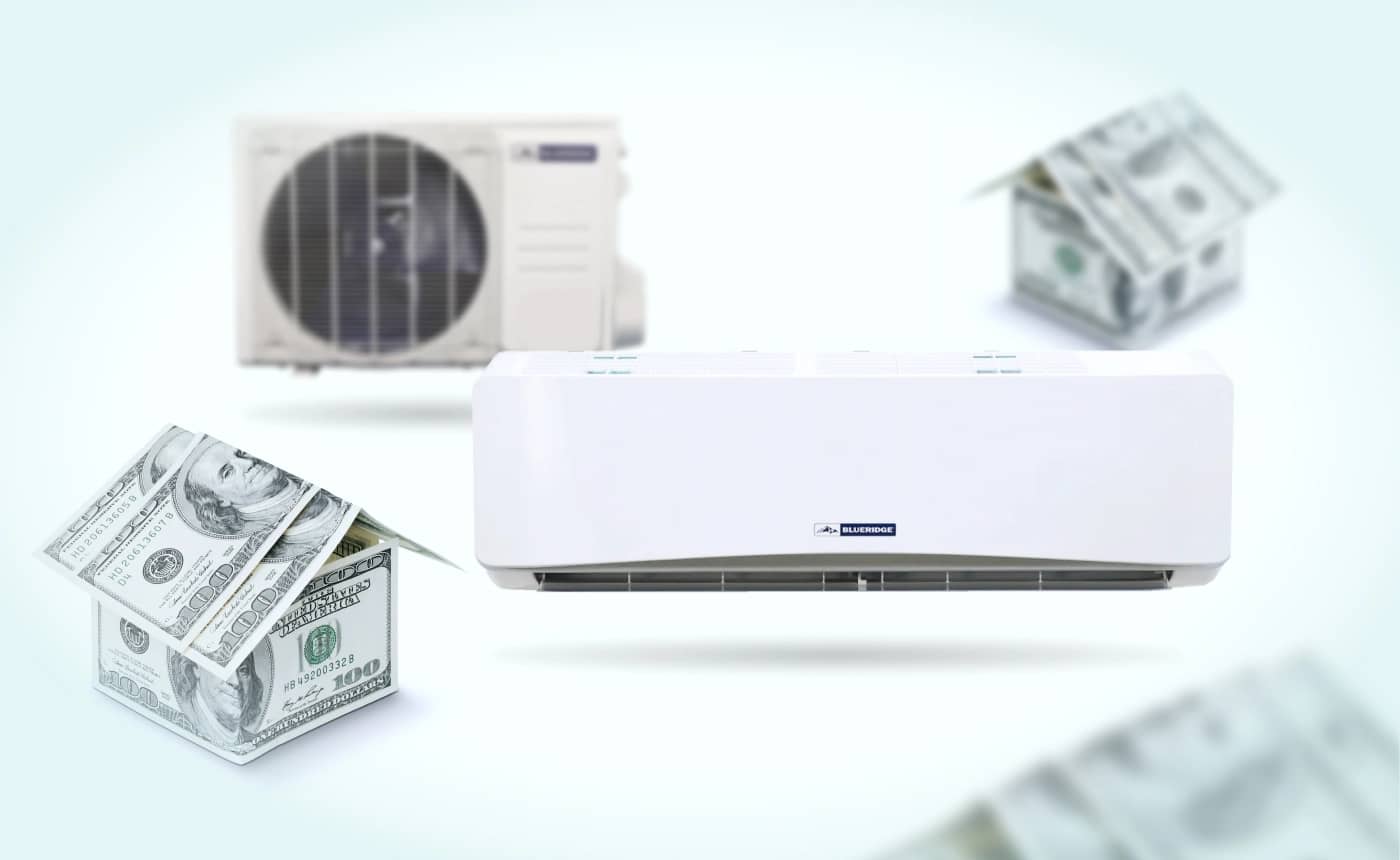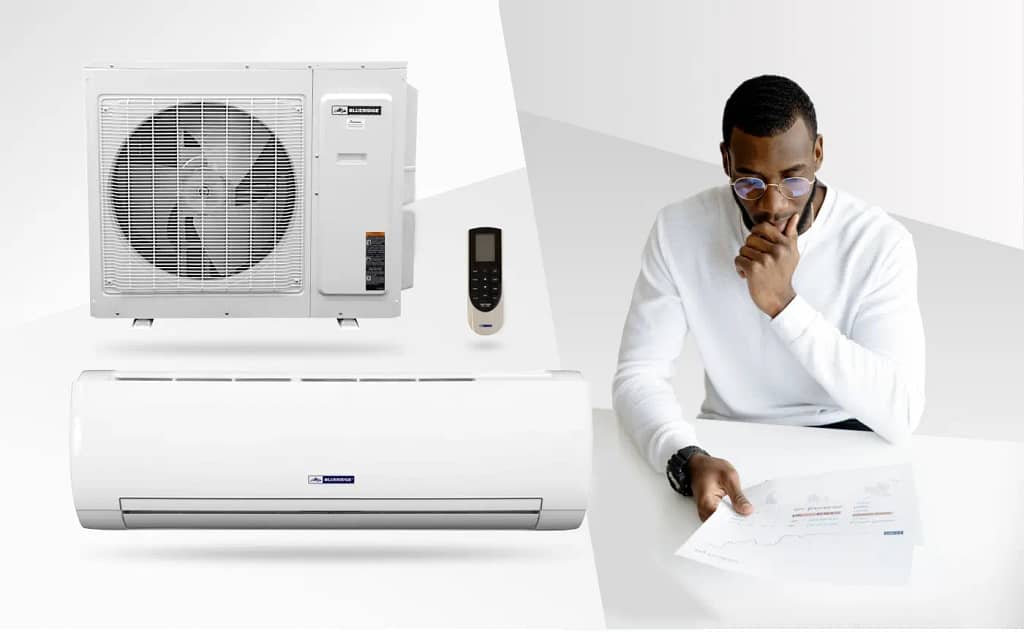
Before making any new purchase for your home or business, you always want to research the cost.
However, this research can sometimes feel overwhelming in the rapidly growing and continuously changing world of ductless mini-split systems. You may be trying to figure out where to start.
KEY TAKEAWAYS
- Single-zone mini-split systems are efficient heating and cooling solutions that are excellent alternatives to traditional ducted HVAC systems.
- The costs of a single-zone mini-split system can vary, from environmental factors to the structure of your home or building.
- It’s essential to learn about the costs of a single-zone mini-split system, compare options, and make the best decision for your space and budget.
Ductless mini-split systems can be an excellent and highly effective way to heat and cool various spaces. Learning more about these systems, including a cost breakdown, will help you make an informed decision before you buy.
The following will help clarify a few things for you and make your decision easier.
Exploring Single-Zone Mini-Splits
A single-zone mini-split system is a versatile and cost-effective solution to achieve year-round comfort in your home.
But what exactly is a single-zone mini-split, and how does it work?
Defining a Single-Zone Mini-Split System
A ductless single-zone mini-split system (also known as a ductless mini-split heat pump) is a type of ductless HVAC system designed to provide heating and cooling to a specific area or room within a building.

As the name suggests, these mini-splits operate in a single “zone.” That means they can control the climate in a solitary indoor space, such as a bedroom, living room, home office, or even a small studio apartment.
Unlike central HVAC systems that condition the entire house or building through a network of ducts, single-zone mini-splits are compact, energy-efficient, and versatile, making them an ideal choice for localized comfort control.

How a Single-Zone Mini-Split Works
These systems work on the principles of heat transfer and refrigeration.
In cooling mode, the outdoor unit absorbs heat from the indoor space through the indoor unit’s evaporator coil.
It then releases this heat outdoors through the refrigeration cycle, cooling the indoor air.
In heating mode, the process reverses. The outdoor unit extracts heat from outdoor air (even in cold weather) and transfers it indoors to warm the room. This dual functionality lets you enjoy year-round comfort without needing separate heating and cooling HYAC systems.
Typical Applications for Single-Zone Mini-Splits
Single-zone mini-splits are versatile and can work well in various home or commercial building situations. Here are a few of the most popular ways people use these innovative systems:
Home Additions: When adding a new room to your home, a single-zone mini-split can heat and cool the space without extending your existing HVAC system.
Garage Conversions: Transform your garage into a functional living space or home gym with the help of a single-zone mini-split.


Guest Rooms: Ensure guests’ comfort by providing individual climate control in guest bedrooms.
Home Offices: Keep your workspace comfortable year-round, even when the rest of the house maintains different temperatures.
Apartments and Condos: Single-zone mini-splits offer a convenient and energy-efficient solution for smaller living spaces or rental units.
Spot Heating/Cooling: A single-zone mini-split can supplement the HVAC for precise comfort in larger rooms where central systems may struggle.

Single-zone ductless mini-split systems are a versatile HVAC solution made popular thanks to their energy efficiency and cost savings.
Mini split systems offer home and business owners efficient and customizable heating and cooling solutions. That makes them an excellent choice for many applications that need help maintaining ideal temperatures in smaller spaces.
Factors Influencing Single-Zone Mini-Split Cost
When investing in a single-zone mini-split system for your home or other space, you must recognize various factors influencing cost.
Understanding these initial and long-term costs and potential savings can help you plan for years of comfort ahead.
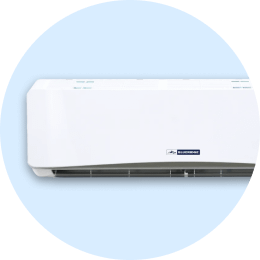
What type of indoor unit(s) suits your space and budget?
The type and features of the indoor unit(s) you choose will impact the overall cost of your ductless mini split air conditioner.
Wall-mounted units are popular for their cost-effectiveness and ease of installation, making them suitable for various applications.
In contrast, concealed ducted units and ceiling cassettes require additional construction work to create space for ducts or recessed installations, which can increase both the installation time and overall expenses.
That said, concealed duct and ceiling cassette mini-splits often offer a more discreet and aesthetically pleasing appearance, making them popular with homeowners who prioritize a seamless and integrated HVAC solution in their living spaces.
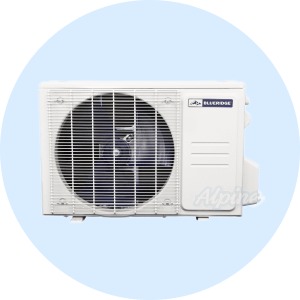
Outdoor Unit:
The outdoor condenser unit’s capacity and efficiency are often a primary driver of cost.
Units with higher capacity (in BTU) and SEER (Seasonal Energy Efficiency Ratio) ratings typically come at a higher initial cost but offer superior heating and cooling performance and energy efficiency.

Refrigerant Lines and Wiring:
During installation, the length and complexity of the refrigerant lines and electrical wiring can also influence a mini-split system’s cost. Longer lines and intricate installations may require more materials and labor, increasing the overall expense.

Accessories and Features:
Optional features like advanced air filtration systems, wireless remote controls, or smart thermostats can add to upfront mini-split system costs. Consider which accessories and add-ons are important in enhancing comfort, convenience, and indoor air quality.
How BTU Capacity and SEER Ratings Factor into Long-Term Cost Savings
When considering the total cost of a single-zone mini-split system, it’s important to compare the initial costs of purchasing and installing a mini-split and the long-term savings associated with these ductless mini-split systems.
Two factors influencing these costs are 1. a single-zone mini-split’s capacity in BTU and 2. a single-zone mini-split’s SEER rating.
Capacity in BTU
The capacity of a ductless mini-split system, measured in BTU, will play a crucial role in its comfort and efficiency. A single-zone system is no exception.

BTU stands for British Thermal Units, a measurement of heat energy. One BTU is the amount of heat required to raise the temperature of one pound of water by one degree Fahrenheit.
In the context of HVAC systems, BTU is commonly used to quantify a system’s heating and cooling capacity. Specifically, it indicates the system’s ability to generate or remove heat while ensuring it is appropriately sized for its space.

Understanding BTU is crucial for achieving efficient and effective climate control in residential and commercial applications.
When applied to ductless systems, a single-zone mini-split’s BTU impacts its capacity to heat or cool a specific area effectively.
For example, a single-zone mini-split system with a higher-than-needed BTU will result in energy waste and increased operating costs.
An oversized mini-split system will cool or heat the room quickly but may reach the desired temperature before adequately dehumidifying the air.
It also means that the frequent on-and-off cycling of the mini-split may put unnecessary stress on the components. This stress can potentially reduce the system’s lifespan and increase maintenance and repair costs.
On the other hand, a single-zone mini-split with a lower BTU than required will struggle to maintain the desired temperature, especially during extreme weather conditions. An undersized system may run continuously at maximum capacity, consuming more energy and increasing utility bills.
Proper sizing will ensure that your single-zone mini-split operates efficiently, effectively, and economically, striking the right balance between comfort and cost savings.

To avoid these issues, conduct a thorough load calculation of your chosen single-zone ductless mini-split or consult a qualified HVAC professional to determine the appropriate capacity for your specific needs.
Proper sizing will ensure that your single-zone mini-split operates efficiently, effectively, and economically, striking the right balance between comfort and cost savings.
SEER Rating
SEER ratings reflect a mini-split system’s ability to be energy-efficient when it’s in cooling mode.
The Seasonal Energy Efficiency Ratio is a crucial metric used to assess the energy efficiency of air conditioning systems by measuring the cooling output they produce over an entire cooling season.

The higher a mini-split SEER rating, the higher its energy efficiency, signifying that the system can deliver more cooling output for each unit of electricity consumed.
Higher SEER-rated mini-split systems consume less electricity, lowering energy costs over time. While units with higher SEER ratings may come with a slightly higher initial price, the potential for long-term energy savings makes them a worthwhile investment.
Cost Comparison: How Does a Single Zone Mini-Split Compare to a Traditional Central AC System?
When deciding between a single-zone mini-split system and a traditional central AC system, it’s essential to look at key factors that will affect the cost of both systems.
From operation and installation to maintenance and repair, each heating and cooling system will have its own set of costs.

1. Installation and Operational Costs:
Installation Costs: Traditional HVAC systems often incur higher upfront installation costs than single-zone mini-split installation.
Traditional systems require extensive ductwork installation, which can be labor-intensive, requiring more materials and skilled labor.
On the other hand, the cost of installing mini-splits is almost always lower. Ductless systems are typically simpler to install, which can result in a lower mini-split installation cost.
Operational Costs: Single-zone mini-splits are known for their energy efficiency. They offer zoned heating and cooling, allowing you to condition only areas in use, reducing energy consumption.
Traditional HVAC systems, while providing whole-house comfort, can be less efficient, especially when ductwork leaks or heating or cooling occurs unevenly throughout the home. This can lead to higher operational costs for traditional systems, particularly in homes with varying temperature needs.

2. Energy Efficiency and Long-Term Savings:
Energy Efficiency: Single-zone mini-splits are designed for energy efficiency. They often feature high SEER (Seasonal Energy Efficiency Ratio) ratings, indicating their ability to cool efficiently.
Traditional HVAC systems can vary in efficiency, and older models may be less efficient. While upgrading to a newer, more efficient traditional HVAC system is an option, single-zone mini-splits typically offer better out-of-the-box efficiency.
Long-Term Savings: The energy-efficient operation of single-zone mini-splits and their zoning capabilities can lead to substantial long-term savings on utility bills.
Traditional HVAC systems can be upgraded for improved efficiency, but the initial investment and the need for ductwork will offset some of the long-term savings. Assessing your specific heating and cooling needs is essential when evaluating the potential for long-term savings.

3. Maintenance and Repair Costs:
Maintenance: Single-zone mini-splits and traditional HVAC systems both require regular maintenance for optimal performance and longevity.
Single-zone mini-splits are generally easier to maintain due to their simpler design. Tasks include cleaning filters and checking refrigerant levels. With their complex ductwork and components, traditional HVAC systems may require more extensive maintenance.
Repair Costs: Regarding repairs, single-zone mini-splits may have an advantage in cost. Their simpler design often means fewer components that can fail, potentially resulting in lower repair expenses.
In contrast, traditional HVAC systems can have a more complex network of ducts, which may involve more costly repairs.
In terms of overall cost, it’s easy to see why the single-zone mini-split is the favorite compared to a traditional central AC unit.
Not only do single-zone ductless mini-split systems have a lower upfront installation cost, but their energy efficiency, zoning capabilities, and potentially lower maintenance and repair costs can lead to long-term savings.
Traditional HVAC systems may offer whole-house comfort but have higher operational costs, particularly if they are less efficient or require significant maintenance.

How to Find the Best Mini-Splits for the Most Cost Savings
Investing in a single-zone mini-split system is precisely that–an investment.
These types of ductless mini-split systems can offer long-term cost savings on heating and cooling expenses. That means these systems are less expensive upfront than conventional HVAC systems and will continue to save you money well into the future.
But to maximize these savings, it’s essential to not only find a good deal at the time of purchase but also prioritize the quality of the mini-split unit and the manufacturer’s reliability.
Here are some tips on balancing cost-effectiveness and product quality so your mini-split system will continue to pay off long after the mini-split AC installation is complete.
Tip 1 – Always Compare Prices:
Start by comparing prices from various HVAC suppliers and retailers. Utilize online resources, visit local stores, and request quotes from multiple providers. Remember that prices vary significantly based on brand, model, and features.
Tip 2 – Look for Seasonal Sales and Promotions:
HVAC systems may go on sale during specific seasons or holidays, depending on the unit type and time of year. Take advantage of these opportunities to secure discounts or promotional offers.
Tip 3 – Keep an Eye Out for Package Deals:
Some suppliers offer package deals that include indoor and outdoor units and necessary accessories like refrigerant lines and mounting brackets. These packages can provide cost savings compared to purchasing components separately.
Tip 4 – Browse the Online Marketplaces:
Online marketplaces like Amazon, eBay, and specialized HVAC websites often feature a wide selection of mini-split systems. Read product reviews and check seller ratings to ensure reliability and quality.
Tip 5 – Research the Top Manufacturers and Dealers:
Purchasing your single-zone mini-split system from a reputable manufacturer or authorized dealer can significantly affect the long-term costs. Well-known manufacturers and authorized dealers can guarantee authentic products, warranty coverage, and access to replacement parts. These advantages will keep your costs low and your mini-split air conditioner in its best shape for many years.
Tip 6 – Product Warranties Matter:
One great way to keep your costs minimal is to ensure your ductless AC system has a manufacturer’s warranty. Warranties vary by brand and model, so carefully review the terms and duration. A strong warranty can provide peace of mind and save on repair costs in the event of issues.
Tip 7 – Consider Professional Installation:
While not a direct cost-saving at purchase, investing in professional installation from a certified HVAC technician ensures that the system is set up correctly, operates efficiently, and maintains warranty coverage. Note that improper installation can lead to performance issues and voided warranties.
Tip 8 – Prioritize Customer Support:
Choose suppliers or manufacturers known for their excellent customer support. Reliable customer service can be invaluable if you encounter any problems with your mini-split system or need assistance with troubleshooting.
Tip 9 – Read all Product Reviews:
Research and read product reviews from other customers to gauge the reliability and performance of the mini-split system you’re considering. Real-world experiences can provide valuable insights into product quality.
By following these tips and being diligent in your research, you can find the best deals on single-zone mini-splits without compromising quality or reliability.
Prioritizing reputable suppliers and investing in a quality product will pay off in terms of long-term cost savings and comfort.
Alpine Home Air: More Comfort for Less Cost
With a commitment to offering top-quality HVAC systems at competitive prices, Alpine Home Air Products is an excellent choice for homeowners seeking a balance between comfort and cost-effectiveness.
Our expert team is dedicated to affordability without compromising on product quality.

This makes Alpine a reliable partner in achieving efficient, reliable, and budget-friendly HVAC solutions for all seasons.
Not only that, but we can help you keep your costs down by answering the most important questions for your specific situation.
From helping you with mini-split installation to performing a load calculation to determine the right capacity for your single-zone mini-split, our excellent HVAC professionals are available.
When you’re ready to learn more about all things mini-split related, reach out to Alpine Home Air!
